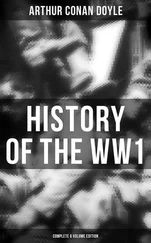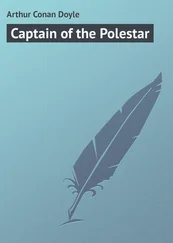Before finally leaving the consideration of this historical retreat, where a small army successfully shook itself clear from the long and close pursuit of a remarkably gallant, mobile, and numerous enemy, it may be helpful to give a chronology of the events, that the reader may see their relation to each other.
1.The German cavalry were the Fourth Cavalry Division, including the 2nd Cuirassiers, 9th Uhlans, 17th and 18th Dragoons. They published in their losses for the “Combat of Néry” 643 casualties. This is not the complete loss, as the artillery does not seem to have been included.
| HAIG’S FIRST CORPS |
SMITH-DORRIEN’S SECOND CORPS |
| August 22 |
| Get into position to the east of Mons, covering the line Mons—Bray. |
Get into position to the west of Mons, covering the line Mons—Condé. |
| August 23 |
| Artillery engagement, but no severe attack. Ordered to retreat in conformity with Second Corps. |
Strongly attacked by Von Kluck’s army. Ordered to abandon position and fall back. |
| August 24 |
| Retreat with no serious molestation upon Bavai. Here the two Corps diverged and did not meet again till they reached Betz upon September 1. |
Retreat followed up by the Germans. Severe rearguard actions at Dour, Wasmes, Frameries. Corps shook itself clear and fell back on Bavai. |
| August 25 |
| Marching all day. Overtaken in evening at Landrecies and Maroilles by the German pursuit. Sharp fighting. |
Marching all day. Reinforced by Fourth Division. Continual rearguard action becoming more serious towards evening, when Cambrai — Le Cateau line was reached. |
| August 26 |
| Rearguard actions in morning. Marching south all day, halting at the Venerolles line. |
Battle of Le Cateau. German pursuit stalled off at heavy cost of men and guns. Retreat on St. Quentin. |
| August 27 |
| Rearguard action in which Munsters lost heavily. Marching south all day. |
Marching south. Reach the line Nesle—Ham—Flavy. Battle of Le Cateau. |
| August 28 |
| Cavalry actions to stop German pursuit. Marching south on La Fère. |
Marching south, making for the line of the Oise near Noyon. Light rearguard skirmishes. |
| August 29, 30, and 31 |
| Marching on the line of the Aisne, almost east and west. |
Crossed Oise. Cavalry continually engaged. General direction through Crépy-en-Valois. |
| September 1 |
| Sharp action at Néry with German vanguard. Later in the day considerable infantry action at Villars—Cotteret. Unite at Betz. |
Retreat upon Paris continued. Late this night the two Corps unite once more at Betz. |
| September 2 |
| Crossed the Marne and began to fall back on the Seine. Halted near Presles. |
Crossed the Marne and began to fall back on the Seine. |
V. The Battle of the Marne
Table of Contents
The general situation—“Die grosse Zeit” — The turn of the tide—The Battle of the Ourcq—The British advance—Cavalry fighting—The 1st Lincolns and the guns —6th Brigade’s action at Hautvesnes—9th Brigade’s capture of Germans at Vinly—The problem of the Aisne—Why the Marne is one of the great battles of all time
There are several problems connected with the strategical opening of the great war which will furnish food for debate among military critics for many years come. One of these, already alluded to, is the French offensive taken in Alsace and Lorraine. It ended in check in both cases, and yet its ultimate effects in confusing the German plans and deflecting German armies which might have been better used elsewhere may be held to justify the French in their strategy.
Another remarkable and questionable move now obtrudes itself, this time upon the part of the Germans. Very shortly after the outbreak of war, the Russians had pushed their covering armies over the frontier of East Prussia, and had defeated a German force at Gumbinnen, with a loss of prisoners and guns. A few days later the left wing of the widespread, and as yet only partially mobilised, Russian army struck heavily at the Austrians in the south near Lemberg, where after a week of fighting they gained a great victory, with prisoners, which amounted to over 70,000 men and a large booty of guns and supplies. Before this blow had befallen their cause, and influenced only by the fact that the Russian right wing was encroaching upon the sacred soil of the Fatherland, a considerable force was detached from the invading armies in France and dispatched to the Eastern front. These men were largely drawn from the Third (Saxon) Army of Von Haussen. Such a withdrawal at such a time could only mean that the German general staff considered that the situation in France was assured, and that they had still sufficient means to carry on a victorious invasion. Events were to show that they were utterly mistaken in their calculation. It is true that, aided by these reinforcements, Von Hindenburg succeeded on August 31 in inflicting a severe defeat upon the Russians at the battle of Tannenberg, but subsequent events proved that such a victory could have no decisive result, while the weakening of the armies in France may have had a permanent effect upon the whole course of the war. At the very moment that the Germans were withdrawing troops from their Western front the British and French were doing all they could to thicken their own line of resistance, especially by the transference of armies from Alsace and the south. Thus the net result was that, whereas the Germans had up to August 25 a very marked superiority in numbers, by the beginning of September the forces were more equal. From that moment the chance of their taking Paris became steadily more and more remote.
The first month of the war represented a very remarkable military achievement upon the part of Germany. In her high state of preparation as compared with the Allies, it was to be expected that the beginning of hostilities would be all in her favour, but the reality exceeded what could have been foreseen. Her great armies were ready to the last button. Up to the eve of war the soldiers did not themselves know what their field uniform was like. At the last moment two millions of men filed into the depots and emerged in half an hour clad in grey, with new boots, equipment, and every possible need for the campaign. On her artillery surprises she set special store, and they were upon a vast scale. The machine-gun had been developed to an extent unknown by other armies, and of these deadly little weapons it is certain that very many thousands were available. From the tiny quick-firer, carried easily by two men upon a stretcher, to the vast cannon with a diameter of sixteen-and-a-half inches at the mouth, taking three railway trucks for its majestic portage, every possible variety of man-killing engine was ready in vast profusion. So, too, was the flying service, from the little Taube to the huge six-hundred-foot Zeppelin. From these latter devices great results were expected which were not destined to materialise, for, apart from reconnaissances, they proved themselves to be machines rather for the murder of non-combatants than for honest warfare.
Making every allowance for the huge advantage which the nation that knows war is coming must always enjoy over those which merely fear that it may come, it would be foolish to deny the vast military achievement of Germany in the month of August. It reflects great credit upon the bravery and energy of her troops, as well as upon the foresight of her organisers and the capacity of her leaders. Though we are her enemies, our admiration would have been whole-hearted were it not for the brutalities which marked her advance both in Poland, in Belgium, and in France. Consider that wonderful panorama of victory which was known all over the Fatherland as “Die grosse Zeit,” On August 10 fell the great fortress of Liège, on the 22nd the great fortress of Namur, early in September that of Maubeuge, while the smaller strongholds went down as if they were open cities. On August 10 was a considerable victory at Mülhausen, on the 20th the Belgians were defeated at Tirlemont, on the same day Brussels was occupied. On the 22nd the French central army of ten corps was defeated in a great battle near Charleroi, losing, according to the Germans, some 20,000 prisoners and 200 guns. On the left flank the Crown Prince’s army won the battle of Longwy, taking 10,000 prisoners and many more guns. On August 23 the Duke of Würtemberg won a battle in the Ardennes. Upon the same date the British were driven from their position at Mons. Upon the 26th they were defeated at Le Cateau. Most of Belgium and the North of France were overrun. Scattered parties of Uhlans made their way to the shores of the Atlantic spreading terror along the Channel coast. The British bases were in such danger that they had to be moved.
Читать дальше












